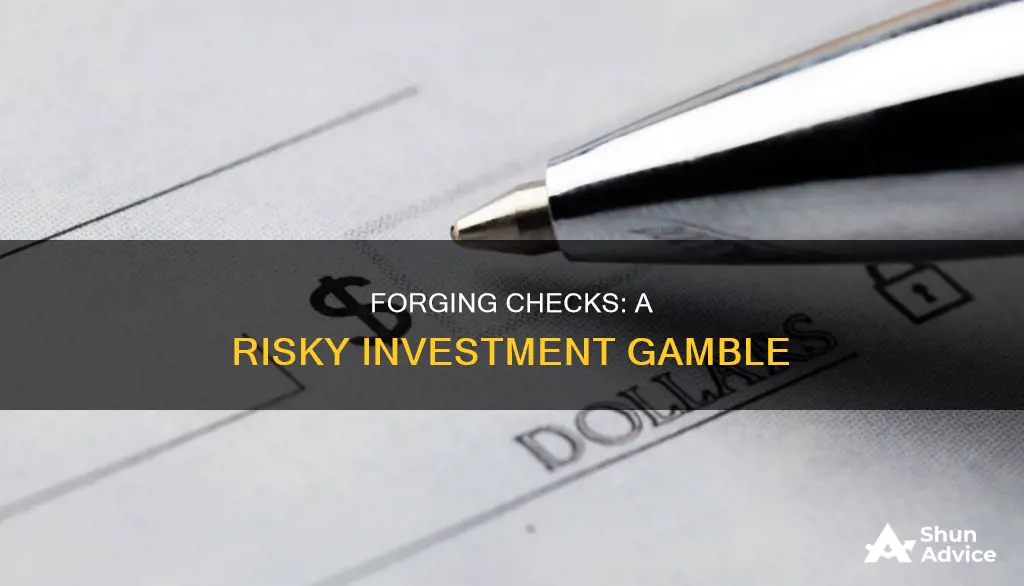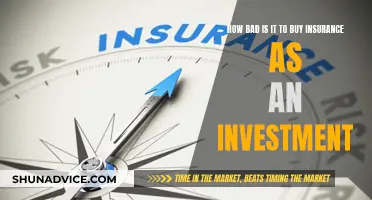
Check fraud is a serious issue that costs financial institutions billions of dollars per year. It involves the illegal use of paper or digital checks to gain money, commonly by forging an account holder's signature on a stolen check, altering the payee or amount, or creating a counterfeit check. This type of fraud is not limited to paper checks, as digital checks deposited through mobile applications have also become vulnerable to editing software, making it easier than ever for fraudsters to alter or forge checks. Check washing, where all inked information is erased from a legitimate check and replaced with fraudulent details, is another form of check forgery. To combat check fraud, financial institutions should train their employees to diligently examine checks for signs of forgery and consider investing in signature verification tools.
| Characteristics | Values |
|---|---|
| What is check fraud? | The use of paper or digital checks to illegally gain money. |
| Is check fraud a federal crime? | Yes, check fraud is a criminal offense in the US. Depending on the nature and value of the fraud, it can be a misdemeanor or a felony. |
| Who is liable for check fraud? | Generally, a financial institution that accepts a fraudulent check is liable for any losses. However, in some circumstances and jurisdictions, the liability can rest with the individuals and businesses that deposit fraudulent checks. |
| How does check fraud work? | By falsifying or altering legitimate checks or exploiting the time delay between a check being deposited and cleared. |
| Types of check fraud | Counterfeit checks, forged checks, altered checks, paperhanging, check kiting, check washing, identity check theft, check counterfeiting, cashier's check fraud. |
| Check fraud statistics | In a 2023 survey, over 60% of responding businesses reported having to conduct at least one check fraud investigation in the previous year. A 2018 report valued check fraud attempts at US financial institutions at over $15.1 billion. |
| How to spot a fake check | Check if the check was issued by a legitimate bank, verify the check details with the bank, be skeptical of unexpected payments, look for discrepancies in the mailing address and amount, and watch out for security features like watermarks and color-changing ink. |
| How to prevent check fraud | Use checks with added security features, monitor accounts and analyze behaviors, audit accounts regularly, use positive pay or reverse positive pay systems, train employees to spot forgeries, educate the public on check fraud. |

Check forgery
To prevent check forgery, individuals should cancel checks as soon as they are missing or stolen. Financial institutions should train their tellers to know the signs of forgeries and diligently examine every check. Signature verification tools can also be used to automate the process of detecting forged checks.
Investments: The Drive to Gain More
You may want to see also

Fake checks
The working mechanism of fake check scams is relatively consistent. The scammer sends a counterfeit check to the victim, instructing them to deposit it into their bank account. The victim is then asked to wire back a portion of the funds, often due to reasons such as expenses, fees, or overpayment. In some cases, the scammer may even request the funds as an advance for securing employment. Unfortunately, by the time the victim realizes the check is fake, they may have already sent money back to the scammer or used it for personal purchases.
There are several variations of fake check scams. One common type is the "secret shopper" or "mystery shopping" scam, where scammers offer individuals an appealing job opportunity. They send a check and instruct the victim to deposit it, then ask them to wire back a portion of the money for "taxes" or "fees." Another variation is the "overpayment" scam, where scammers target individuals selling items online. They send a check for more than the purchase price and ask the seller to wire back the excess amount. In both cases, the victims end up losing money when the check is eventually discovered to be fake.
Fake check scams can have severe consequences for victims. Not only do they suffer financial losses, but they may also face criminal investigations related to money laundering. Additionally, their personal information may be compromised, leading to identity theft and further fraud. It is crucial to be vigilant and cautious to protect oneself from these sophisticated scams.
To avoid becoming a victim of fake check scams, it is essential to be cautious when receiving unexpected checks and to verify the legitimacy of the sender. Individuals should be wary of sending money to strangers and be cautious when dealing with overseas transactions. It is also important to remember that genuine organizations will not demand payments or fees before releasing prizes or conducting business transactions.
Middle-Aged Investors: Saving Enough?
You may want to see also

Forged signatures
To protect against fraud, financial institutions should train their tellers to diligently examine every check and be able to spot the signs of forgery. They should also consider investing in signature verification tools, which use sophisticated algorithms and machine learning to compare signatures to a reference signature collected from the account holder. These tools can automate the process of detecting forgeries, especially in electronic transactions.
There are a few types of signature forgeries, ranging from blind forgeries, which bear little to no resemblance to the actual signature, to skilled forgeries, which are produced by criminals who have practiced replicating signatures. Manual signature verification can detect blind forgeries but struggles with skilled forgeries, leading to inconsistent results depending on the expertise and mood of the reviewer.
To spot a forged check, tellers can use the Z-method, reviewing the check from the top left corner to the bottom right corner, looking for issues such as distorted images, incorrect dates, or discrepancies in values. They can also look for specific signs of a forged signature, such as shaky writing (criminal tremor) or equal amounts of pressure throughout the signature, which can indicate a fake. Asking for identification and having a short conversation with the customer can also help spot potential fraud.
If you are a victim of check fraud, it is important to act quickly to protect your finances and identity. Contact your bank immediately, close your checking account, file a police report, and consider signing up for credit monitoring to prevent further fraud.
Investments: Your Future's Best Friend
You may want to see also

Check washing
The National Check Fraud Center estimates that check washing takes place to the tune of $815 million every year in the U.S., and the problem is increasing. The process is simple: thieves steal a filled-out cheque, erase everything but the signature, and then make the cheque out to themselves. They can then deposit the cheque at a bank or ATM, or use mobile deposit or a check-cashing store.
To protect yourself from check washing, you can:
- Use electronic bill pay and transfers instead of cheques.
- Use a black gel pen to write cheques, as the ink is harder for criminals to wash off.
- Drop cheques off at the post office, rather than leaving them in a mailbox.
- Retrieve mail from your mailbox daily.
- Ask for a USPS mail hold when travelling.
- Review your checking account frequently for unusual or unexpected withdrawals.
Robinhood: Still Relevant?
You may want to see also

Counterfeit checks
In a typical counterfeit check scam, a scammer will send you a check, usually for more than they owe you, and ask you to deposit it into your bank account. They will then instruct you to send some of the money back to them or to an accomplice before the bank realizes that the check is fake. This can leave victims responsible for the funds that were sent to the scammer, resulting in financial losses.
To protect yourself from counterfeit check scams, it is important to be cautious when receiving a check from someone you don't know, especially if it is for more than the expected amount. Be wary of requests to send money back or cover taxes, fees, or other expenses. It is also recommended to verify the legitimacy of the check by contacting the issuing bank directly and comparing security features like watermarks, security threads, and color-changing ink.
Additionally, be aware of common signs of a counterfeit check, such as poor-quality paper, smeared colors when rubbed with a moist finger, altered or erased information, missing customer information, or discrepancies between numerical and written amounts. Remember that even official-looking checks can be fake, and always be cautious when providing financial information or depositing checks from unknown sources.
Rich People: The Only Investors?
You may want to see also
Frequently asked questions
Check forgery is the act of falsifying a written instrument to collect money that does not belong to the forger. This can include forging signatures on real checks, check washing (altering details on a legitimate check), or creating fake checks.
Check fraud costs financial institutions billions of dollars per year, with banks reporting approximately 680,000 cases annually in the US as of 2024. Advanced graphics and printing technologies have made it easier for criminals to create fraudulent checks.
Check forgery is generally a criminal offence and can result in fines and imprisonment. The specific consequences depend on the country, state law, the amount of money involved, and the nature of the fraud.
There are several ways to spot a forged check, including checking for issues with the check issuer, distorted images, incorrect dates, discrepancies in amounts, and irregularities in the signature. It is also important to verify the legitimacy of the issuing bank and be cautious of unexpected or unusually large payments.
To prevent check fraud, individuals should be cautious when receiving or issuing checks, reporting any suspicious activity. Financial institutions should train their employees to detect forgeries, use signature verification tools, and implement security measures such as watermarks and reactive ink on checks.







